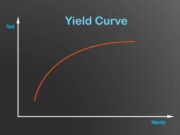KHR (Cambodian Riel)
What is 'KHR' The currency abbreviation or currency symbol for the Cambodian riel (KHR), the currency for Cambodia. The riel is made...
Daily Trading Limit
What is 'Daily Trading Limit' The maximum gain or loss on a derivative contract, such as options and futures contracts, that is...
Facebook Credits
DefinitionFacebook Credits was a virtual currency that enabled people to purchase items in games and non-gaming applications on the Facebook Platform. One U.S. dollar...
Obligation Bond
What is 'Obligation Bond' A municipal bond used to secure a mortgage on property or other physical assets that can be liquidated....
Nakahara Prize
DefinitionThe Nakahara Prize is an annual award given by the Japanese Economic Association to Japanese economists under the age of 45 whose work has...
PL Statement
Source: WikipediaLast Sourced: 2021-02-01This Article has been Edited for Accessibility Further Reading Financial ratios as a means of forecasting bankruptcy - www.jstor.org Testing...
Macaulay Duration
What is The 'Macaulay Duration' The Macaulay duration is the weighted average term to maturity of the cash flows from a bond....






























